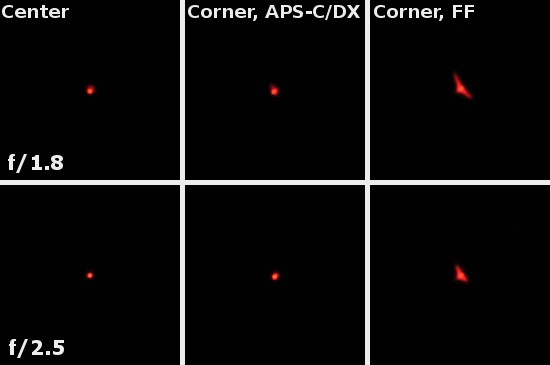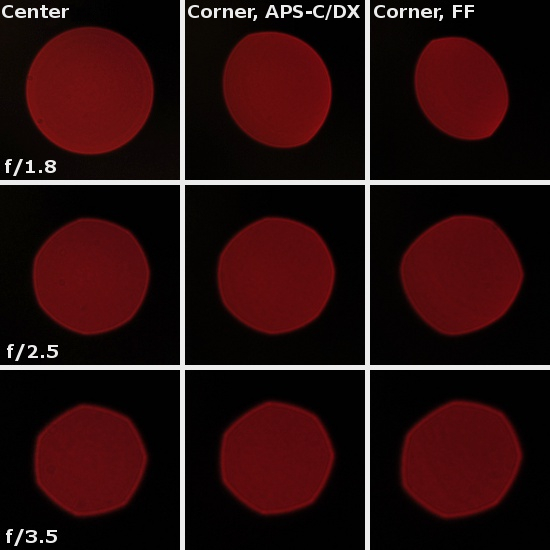Nikon Nikkor AF-S 35 mm f/1.8G ED
7. Coma, astigmatism and bokeh
Because of an optical design that borrows from its sister lens (the professional NIKKOR 35mm f/1.4), point light sources are reproduced with minimal sagittal coma flare, a factor that enables stunning nightscapes.
I suppose I should start with the fact that the Nikkor’s AF-S 35 mm f/1.4G coma correction was weak – the details are included in our test of that lens - so quoting here its performance is an misunderstanding.
Please Support UsIf you enjoy our reviews and articles, and you want us to continue our work please, support our website by donating through PayPal. The funds are going to be used for paying our editorial team, renting servers, and equipping our testing studio; only that way we will be able to continue providing you interesting content for free. |
- - - - - - - - - - - - - - - - - - - - - - - - - - - - - - - - - - - - - - - - - - - - - - - -
The authors of press releases really bend over backwards because praising the coma correction of the tested lens when it shows such bad results in full frame corners is a huge slip-up. The coma is corrected well but only on the small APS-C/DX sensor. On full frame its level is significant and even after stopping down to f/2.5 you can’t eliminate it completely.

Also the astigmatism makes itself felt, especially at the maximum relative aperture. Its influence is visible in a diode photo (above) we got in the frame centre by f/1.8. The image is not perfectly circular and there is a bit asymmetric gleam around it. The average difference between vertical and horizontal MTF50 function values amounted to as much as 23% and it is rather high. The astigmatism is an important factor limiting the performance of the lens especially by f/1.8-2.0. It decreases to negligent levels in an aperture range from f/2.8 to f/4.0
The defocused light points look great for a change. The light is spread very evenly, without any concentric circles, rims or local extremes. We think the blur provided by the Nikkor 1.8/35 G might be pleasing to the eye.







